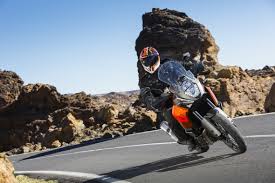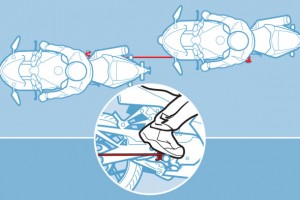This might be a repeat for some members but we have allot of new members now and I posted this in our old website a few years ago. I bring this up while reading a new members blog last month. So here you guys go.
TAR SNAKES
You’ve seen tar snakes out on the road countless times, but probably never paid too much attention to them in your car. But when riding your motorcycle, it’s a whole different story. With only two tiny patches of rubber keeping you upright on a bike, you have to be a lot more wary about road surface imperfections, and tar snakes are among the most sinister ones you’ll find.
What are Tar Snakes?
As roads age, they develop cracks in the surface. As the road gets abused and traffic and weather take their toll, those cracks get bigger and bigger, and cause the road surface to degrade quickly. As a temporary fix, road crews will fill the cracks with sealant – usually a soft, tar-based substance – to fill the cracks and keep them from expanding. The result? A road covered in random, windy black lines that resemble snakes; hence the term, “tar snakes.”
Why Are Tar Snakes a Hazard to Motorcyclists?
Asphalt sealer, or tar snakes, are hazardous to riders because they can compromise your traction in three ways:
- They have a very different texture than asphalt, and your tires will respond differently to them than to the road
- They create a bumpy road surface that can unsettle your suspension
- They can become softer or slicker in hot weather, or when wet
Tar snakes are generally a lot softer than asphalt, so they can easily get foreign objects embedded into them and they can even come dislodged and stick to your tires! Again, none of this would be an issue in a four-wheeled vehicle (which is why they are used), but on a motorcycle, they pose a unique hazard.
What Will Happen If You Hit A Tar Snake?
If you’ve ever ridden over painted lines in the roadway, you may have noticed a change in traction from your tires; this is because paint lines tend to be more slippery than asphalt, and should be avoided.
Tar snakes are similar, but a lot more tricky; because unlike paint lines, you never know where they will be! They are applied on the road wherever damage occurs, so you can hit a patch of them very unexpectedly, and some of these patches can be pretty nasty.
Most of the time, when you ride over tar snakes, you won’t notice much more than a bumpy road. The trouble starts when you’re leaned over; hitting a tar snake can cause you to lose traction momentarily, causing your bike to slide.
Often, you’ll regain traction quickly and won’t experience more than a “puckering moment,” but in a worst-case scenario, you can go down. This has happened to many riders – even motorcycle cops in several cases across the country.
So what do you do when you encounter these dangerous snakes?
How to Handle Tar Snakes on your Motorcycle
Remember, tar snakes are only applied to roads that are damaged, so you’re already riding on a road surface that’s less than ideal. The tar snakes on the road make the surface better for most vehicles, but worse for us riders, so you have to be doubly cautious when riding over them. Here are a few steps you can take to deal with them:
- Mentally, approach the tar snakes as you would any obstacle
- Be aware of the danger yet remain flexible mentally; be open to new possibilities
- Accept that the motorcycle may move around beneath you and that traction is less than perfect
- Visualize a positive outcome
- Physically, approach the tar snakes as you would any obstacle
- Reduce speed
- Approach the tar snakes at 90 degrees where possible, no less than 45 degrees preferably
- Remain loose on the motorcycle; tightening up or establishing a “death grip” on the motorcycle will only create issues
- Operate the throttle or brakes in a gradual, slow, and precise fashion
Overall, tar snakes are hazardous to motorcycles because they are simply not designed with us riders in mind. Transportation departments and road crews slap them all over aging roads across the country because they are perfectly acceptable road repairs for those in four-wheeled vehicles – the handful of us that ride on two.Just know to look out for them, be prepared, and keep the rubber side down…where it belongs!



















